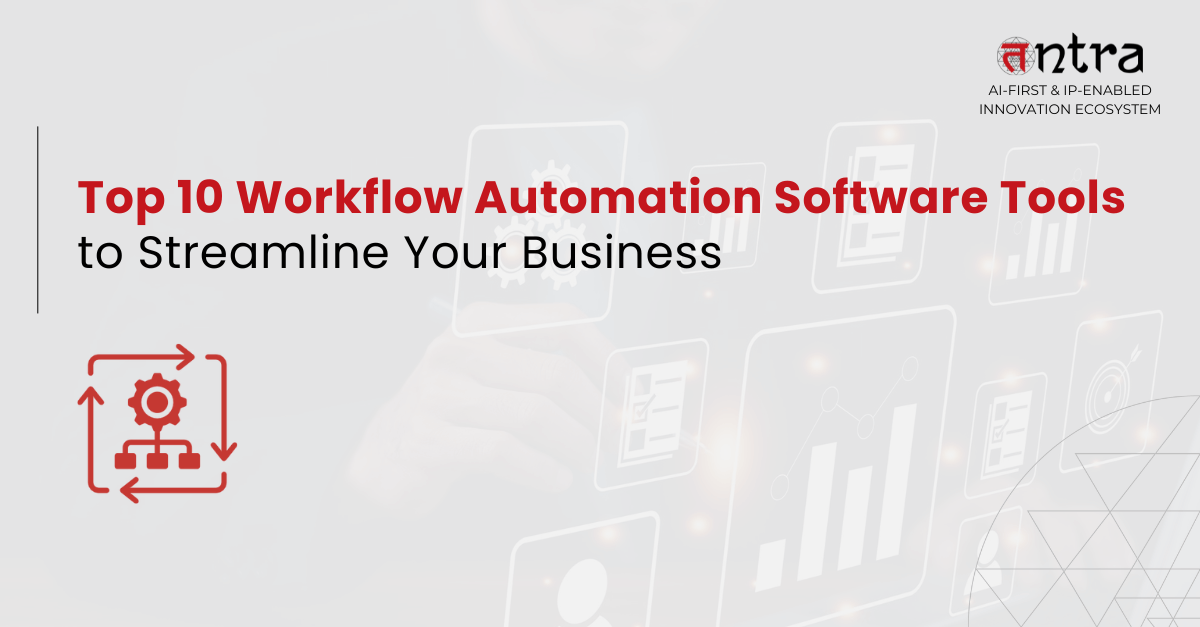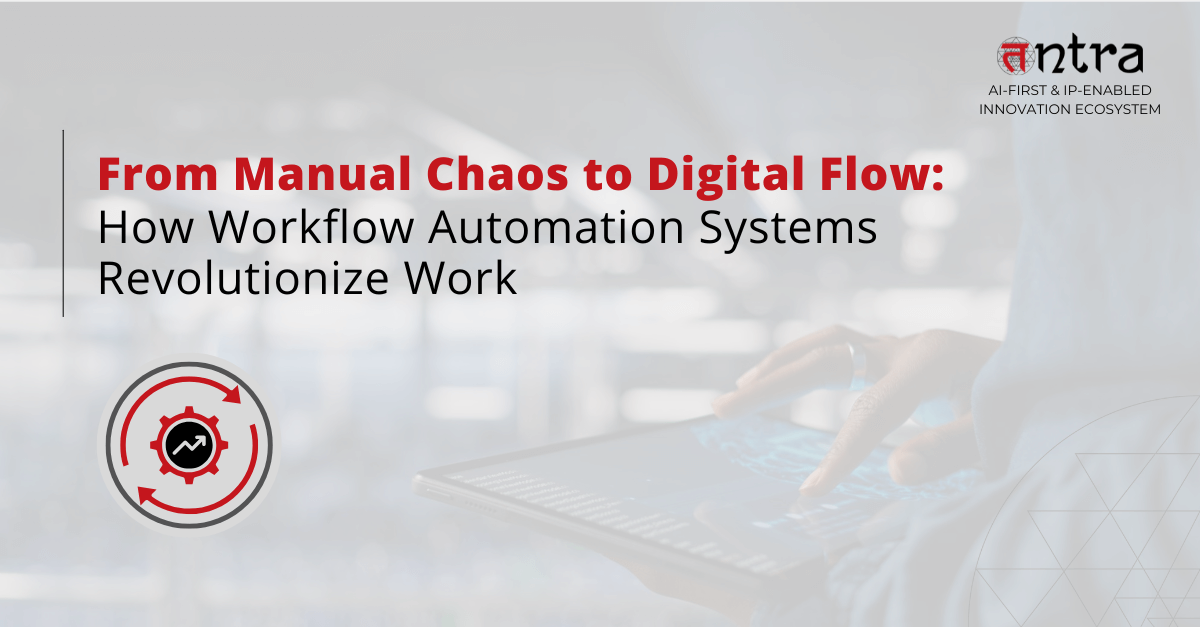
Top 10 Workflow Automation Software Tools to Streamline Your Business in 2025
Table of Contents
ToggleThis in-depth guide explores the top 10 workflow automation tools 2025, comparing platforms like Zapier, Kissflow, Salesforce Flow, Make.com, Power Automate, n8n, Workato, and more. You’ll learn how each workflow automation software works, what makes them different, and how they help streamline sales, HR, operations, customer service, and cross-team processes. The article also covers AI workflow automation software, modern trends, and steps to choose the best workflow automation software 2025 for your business.
If 2024 was the year everyone talked about automation, then 2025 is the year businesses finally started implementing it. Whether you’re a founder drowning in repetitive tasks, an operations leader chasing efficiency, or a business owner scaling without burnout, workflow automation tools have become the silent backbone of smoother operations.
Choosing the best workflow automation software 2025 isn’t as simple as picking the most popular tool. Today’s top workflow automation tools 2025 combine AI, no-code simplicity, end-to-end integration, cross-team collaboration, and enterprise scalability — all wrapped in user-friendly experiences.
This guide breaks down the top workflow automation platforms, their best use cases, and how to select the right one for your goals.
Why Workflow Automation is No Longer Optional in 2025
Businesses are embracing workflow automation solutions because they help:
- Save time
- Minimize errors
- Eliminate bottlenecks
- Improve visibility
- Scale without hiring aggressively
- Build reliable, repeatable processes
Modern workflow automation software automates everything: lead assignment, approvals, onboarding, data syncs, email triggers, task creation, customer support routing, and more.
Most workflow management tools today come with drag-and-drop builders, AI-powered automation platforms, templates, integration libraries, dashboards, and logic-driven workflows.
Top 10 Workflow Automation Software Tools to Streamline Your Business in 2025
This list includes the best tools across no-code, low-code, enterprise automation, and AI workflow automation platforms with no-code features.
1. Zapier — The King of No-Code Workflow Automation
Zapier remains one of the best workflow automation software 2025 for SMBs.
Why It Stands Out
- 6,000+ integrations
- Drag-and-drop builder
- AI-guided workflows
- Ideal for non-technical users
Best For
- Small businesses
- Marketing automation
- Sales data routing
- Solopreneurs
Zapier also dominates workflow automation tools comparison (Zapier vs Make vs n8n) discussions due to its flexibility.
2. Kissflow — Full Workflow Management System
Kissflow is built for companies wanting a complete workflow management system rather than simple automations.
Why It Stands Out
- Strong business process automation tools
- No-code + low-code builder
- End-to-end orchestration
Best For
- HR
- Procurement
- Finance
- Enterprises needing a workflow management solution
3. Salesforce Flow — Enterprise-Grade Automation
Native to Salesforce, this is one of the top automation software 2025 for enterprise teams.
Why It Stands Out
- Deep CRM integration
- Einstein-powered AI workflow automation software
- Complex business logic
Best For
- Mid–large enterprises
- Sales & service automation
- Healthcare & finance
- Teams seeking the best workflow management software
4. Make.com — Visual Automation for Complex Workflows
Make.com offers a highly visual approach to workflow process management software.
Why It Stands Out
- Deep customization
- Advanced branching
- Affordable
Best For
- Technical teams
- Data-heavy workflows
- SaaS companies
- Agencies looking for digital process automation tools
5. Microsoft Power Automate — Automation for Microsoft Ecosystems
Ideal for companies immersed in Microsoft 365, Azure, or Teams.
Why It Stands Out
- Robotic Process Automation (RPA)
- AI automation
- Enterprise-grade security
Best For
- Large enterprises
- Finance & operations
- Compliance-driven teams
Power Automate is one of the automation software for enterprises heavily adopted in 2025.
6. n8n — Open-Source Automation for Developers
n8n gives growing businesses flexibility and control through open-source automation.
Why It Stands Out
- Self-host or cloud
- Developer-friendly
- Highly customizable
Best For
- Startups
- Engineering teams
- Businesses needing custom workflow automation solutions
7. HubSpot Operations Hub — Automation for Revenue Teams
Built for RevOps operations, this tool blends CRM with automation.
Why It Stands Out
- Smart CRM workflows
- AI data cleanup
- Revenue operations automation
Best For
- Sales
- Marketing
- Customer success
- B2B companies using a workflow management platform
8. AirSlate — Document & e-Sign Workflow Automation
AirSlate focuses on document-driven workflows and e-sign automation.
Why It Stands Out
- eSign + forms + approvals
- Deep document automation
- Strong for HR & education
Best For
- HR
- Contracts
- Finance
- Document-heavy teams
9. Workato — Enterprise Integration + AI Automation
Workato is one of the best automation tools for businesses at enterprise scale.
Why It Stands Out
- AI-powered workflows
- High security
- Complex process orchestration
Best For
- IT
- Finance
- Enterprise workflow automation
- Cross-department integration
10. Pipefy — Structured Operations for SMBs
An intuitive pick for small businesses and operations teams.
Why It Stands Out
- Kanban workflows
- Strong approval flows
- No-code + low-code
Best For
- Operations
- HR
- Procurement
- SMBs needing workflow automation for small business
Choosing the Right Workflow Automation Software
When deciding on the best workflow automation software, consider:
1. What workflows are you automating?
- Marketing → Zapier, Make
- CRM → HubSpot, Salesforce Flow
- Approvals → Kissflow, Pipefy
- Document workflows → AirSlate
- Developer automation → n8n
- Enterprise systems → Workato, Power Automate
2. Team skill level
- No-code workflow automation → Zapier, Kissflow
- Low-code automation tools → Pipefy, Make
- Developer-first → n8n, Workato
3. Tech ecosystem
- Microsoft → Power Automate
- Salesforce → Salesforce Flow
- HubSpot → Ops Hub
4. Scalability
Choose tools with:
- AI
- Strong integrations
- Custom logic
- Enterprise support
Where AI Fits into Workflow Automation in 2025
AI is now the core engine in modern AI-powered automation platforms. It can:
- Read documents
- Extract meaning from conversations
- Predict next steps
- Auto-build workflows
- Clean & transform data
- Automate customer interactions
Platforms like Zapier, Make.com, Salesforce Flow, HubSpot, and Workato now offer AI workflow automation software that generates flows directly from text prompts.
Real-World Use Cases
Sales
- Lead routing
- Deal updates
- CRM sync
- Activity logging
HR
- Onboarding
- Leave approvals
- Document management
Operations
- Procurement approvals
- Vendor management
- Incident reporting
Marketing
- Multi-channel posts
- Lead scoring
- Campaign automation
Support
- Ticket routing
- AI reply suggestions
- Escalation workflows
Modern workflow automation services keep your operations running 24/7 with minimal manual effort.
Conclusion
Automation is not a threat — it’s a relief. It eliminates stress, removes repetitive work, and gives your team time to focus on creativity, collaboration, and innovation.
Whether you choose Zapier, Kissflow, Workato, Salesforce Flow, or Make.com, your goal is simple:
Build a business that runs like a system, not a scramble.
2025 is the perfect year to unlock workflow automation software, empower your teams, and scale with confidence.
Want to understand which workflow automation platform fits your business best?
Our experts can guide you in choosing, implementing, and scaling the right solution.
👉 Book a free consultation with Tntra’s workflow automation experts.
FAQs
Which automation tool is in demand in 2025?
AI-powered automation tools like Zapier, Make.com, and Salesforce Flow are in highest demand due to their flexibility, integrations, and intelligent workflow capabilities.
What is the best workflow automation tool?
There is no single “best” tool. Zapier is ideal for small teams, Salesforce Flow for enterprises, and Make.com for complex workflows. The right choice depends on your business needs.
What is the most popular automation tool?
Zapier remains the most widely used automation platform globally, thanks to its massive app ecosystem and no-code simplicity for everyday business tasks.
What is the best workflow automation software in 2025?
In 2025, Zapier, Kissflow, Salesforce Flow, Make.com, and Workato lead the market, each excelling for different business sizes and automation complexity requirements.
Which workflow automation tool is most popular?
Zapier continues to be the most popular workflow automation tool because it’s beginner-friendly, powerful, integrates with thousands of apps, and works for almost any business type.





